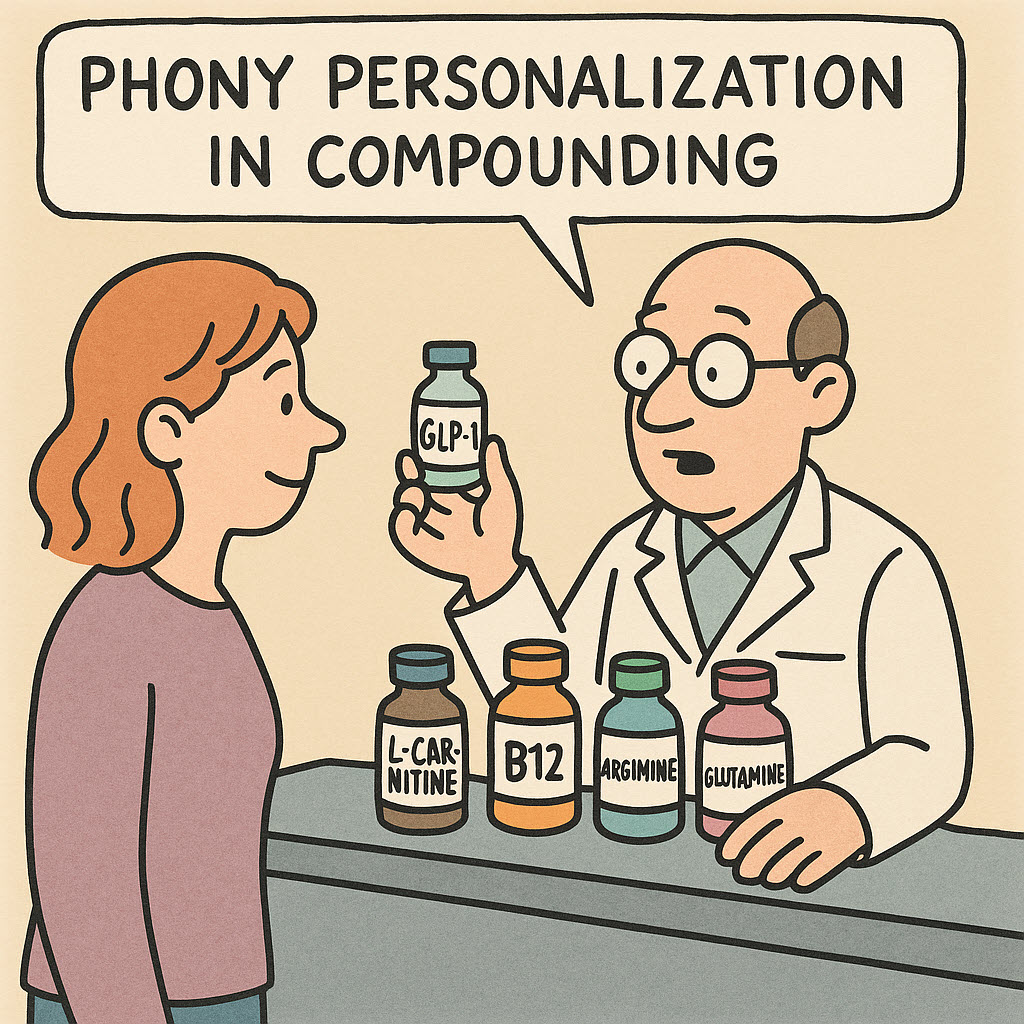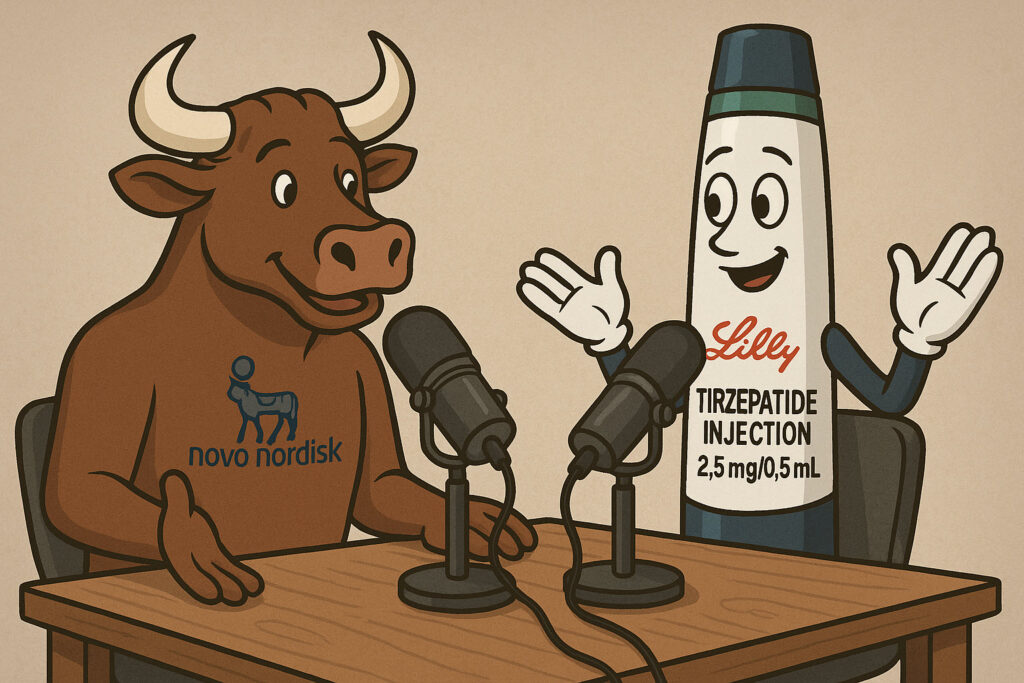
The practice of compounding pharmacies adding various supplements to GLP-1 receptor agonist formulations like semaglutide or tirzepatide is very common in the United States. These additions, which often include vitamins, amino acids, and other compounds, are marketed under the pretense of enhancing effectiveness, minimizing side effects, or offering a personalized solution for patients. However, the document highlights significant scientific and regulatory concerns, noting that these compounded combinations lack FDA approval, robust clinical data, and may pose unpredictable pharmacological effects or patient risks. Ultimately, the source indicates that such practices are largely unregulated and potentially driven by marketing appeal or cost-padding, despite recommendations from medical organizations against using compounded GLP-1s unless a drug shortage necessitates it.
Compounding pharmacies have been known to add vitamins, amino acids, or other supplements to GLP-1 receptor agonist formulations like semaglutide or tirzepatide, particularly in off-label or custom blends. While this practice is largely unregulated and not supported by robust clinical data, it’s being marketed under the premise of enhancing effectiveness, minimizing side effects, or offering a “personalized” solution. Here’s a breakdown of common additives and the purported rationale:
🔹 Common Additives in Compounded GLP-1 Formulations
| Additive | Class | Purported Benefit | Scientific Support |
|---|---|---|---|
| L-carnitine | Amino acid derivative | Supports fat metabolism, energy | Limited; not proven in GLP-1 combos |
| Vitamin B12 | Vitamin | Prevents neuropathy, boosts energy | May help if deficient; some GLP-1 users report B12 depletion |
| L-arginine | Amino acid | Vasodilation, muscle support | Hypothetical benefit; no clinical proof |
| L-glutamine | Amino acid | Gut health, glucose control | Some evidence for glucose effects; mostly separate from GLP-1 |
| L-methionine + inositol + choline (MIC) | Lipotropic agents | Fat metabolism, “fat-burning” | Frequently used in “weight loss shots”; lacks GLP-1 data |
| Taurine | Sulfur amino acid | Antioxidant, metabolism | Common in energy formulations; not validated for GLP-1 use |
| N-acetylcysteine (NAC) | Antioxidant/amino acid precursor | Liver detox, insulin sensitivity | Some mechanistic rationale, but untested in GLP-1 combos |
| B-complex vitamins (e.g., B6, B12) | Vitamins | Energy support, nerve health | May help address fatigue or nerve symptoms |
| Chromium picolinate | Trace mineral | Insulin sensitizer | Used in some diabetes supplements; inconsistent results |
| Zinc | Mineral | Appetite regulation, insulin signaling | Deficiency correction is justified; no clear added benefit with GLP-1s |
🔍 Why Are These Additives Being Used?
“Phony personalization”: Some compounders are adding ingredients to make the product appear unique or customized, despite minimal evidence that these additions enhance the core GLP-1 effect.
Marketing appeal: “Fat burner” or “lipotropic” shots are familiar to patients from weight loss clinics. Adding vitamins or amino acids makes the product more marketable.
Mitigation of side effects: GLP-1s can cause nausea, fatigue, and B12 depletion; additives are sometimes intended to counter these.
Cost-padding: More ingredients can justify higher prices, even if the benefit is marginal.
⚠️ Scientific and Regulatory Concerns
No FDA approval: These combinations are not FDA-reviewed for safety or efficacy.
Unpredictable pharmacology: Adding ingredients may affect absorption, potency, or safety of the GLP-1.
Patient risk: Some additives could interact with other medications or health conditions.
Potential misrepresentation: Patients may believe these additions are medically validated, when they are not.
📚 References & Position Statements
FDA has warned against compounded GLP-1 products not sourced from FDA-approved ingredients (e.g., semaglutide base vs. salt).
The Obesity Medicine Association and Endocrine Society recommend against using compounded GLP-1s unless there is a true drug shortage.
Some additives (e.g., B12, NAC) have plausible mechanisms but no RCTs supporting combination with GLP-1s.
Audio Overview (Google NotebookLM)
(20 minutes 30 seconds)

